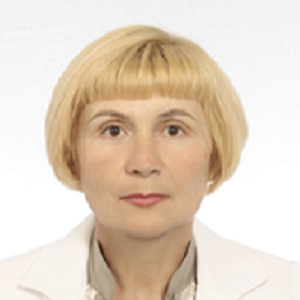Title : Biological features of Maclura pomifera (Rafin.) Schneider in the southern European part of Russia
Abstract:
The work is devoted to the study of ecological and morphometric features of the Maclura pomifera (Rafin.) Schneider: Its yield, seed productivity, as well as the content and characteristics of oil seeds. It was found that the Maclura was introduced into the southern region of Russia in the 19th century. At first it grew on the southern coast of the Crimea near Yalta, and in the middle of the twentieth century the Maclura was transferred to the steppe zone. The plants have already successfully taken root, adapted and acclimatized. Mass plantings of the Maclura were carried out in the 60s of the twentieth century along the roads as the creation of hedges and windbreaks. Recently, they are used in traditional medicine, so the study of the biological properties of the Maclura is important.
The object of the research was the plantations of Maclura Orange, were located near the urban-type settlement Gvardeiskoe, as well as the root shoots of 1985-86 – near the village of Novy Sad, not far from Simferopol. The study was conducted in the central flat agro-climatic region, which belongs to the southern steppe natural zone. Soils – southern black soil. The climate here is temperate with warm dry and long summers, and mild, short winters.
So, Maclura plants were unpretentious to agrotechnical care, relatively drought-resistant, durable, and growing, trees create impassable thorny thickets. The Maclura vegetation started in March and finished in late November with the onset of frost. In late April, it blooms, and fruits already reach removable sizes 12-15 cm in mid-September. Maclura fruits are not edible for humans. Currently, they are not used on an industrial scale, but only in folk medicine. Fruits were begun to collect from mid-September. Maclura yield was 25-500 kg per tree. Fruit weights were 115-406 g. In the fruit there was 2,5%-3,5% by weight of seeds. As a result of this study, for the first time in the Crimea and in Russia, oil from Maclura seeds was obtained. Maclura seeds contained 30-33% of oil, which had a very rich chemical composition: valuable fatty acid included linoleic (77.6%), oleic (12.3%), palmitic (6.6%), stearic (2.3%), etc. The oil contains a small amount of 0.55% such β-linolenic acid, valuable and rarely found in plant objects, i.e. omega-3. The high ratio of polyunsaturated to saturated fatty acids (8.77) can be used to lower serum cholesterol levels, reduce atherosclerosis, and prevent heart disease. Finally, the significant percentage of oleic acid (12.31%) in the oil makes it desirable in the diet. The oil contains styrenes, polyphenols and the whole gamma of vitamin “E”. The study of Maclura p. in the southern European part of Russia is very important both in a scientific and practical sense, since the components of the processing of Maclura fruits and plants have enormous prospects for use in medicine, cosmetology and the food industry to create especially valuable dietary products.
Audience Take Away:
• Valuable substances contained in the fruits of Maclura can improve the quality of human life, they can be used in medicine, cosmetology and the writing industry
• This work can initiate breeding, agronomic research, the technology of creating new drugs to solve pharmacological, cosmetological problems, as well as issues of healthy nutrition


